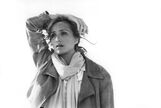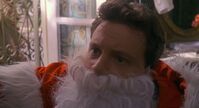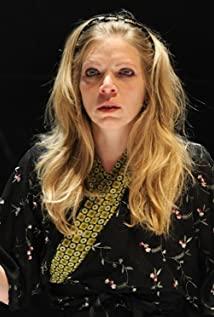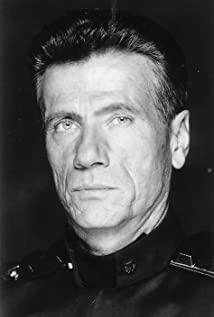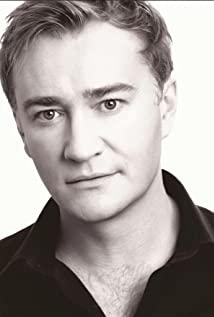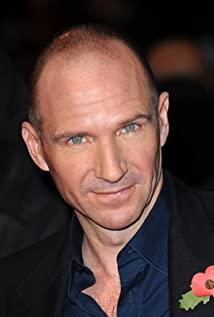The fragment I chose is (2:15:00-2:19:04) Hungarian historian Aimashu placed his lover Kavlin in the cave and walked out of the desert to ask for help. However, when Aimashu, who walked out of the desert, anxiously asked for help from the soldiers in the Allied garrison, he was arrested as a German because of his attitude and name. On the other side, Catherine in the cave ran out of supplies and could not wait for the return of Imashu.
The editing of this film is Walter Murch (Walter Murch) who has edited films such as "Apocalypse Now" and "Love in Prague". Editing master Walter Murch once put forward a point in the book "In The Blink Of An Eye" ("In The Blink Of An Eye"): a cut is a blink of an eye. Editing has a certain connection with the inner psychological-emotional mechanism of human blinking. In addition, he also proposed the concept of "sound design" in the editing. When it comes to "Sound as an emotional guide-track through the complexities of story." (1) I would like to refer to the fragment of "The English Patient" Analyze how Walter Murch uses the two concepts of "blink editing" and "sound design" to edit the film.
Walter Murch said in the book that people "blink" because of a certain inner emotion, and "blink" because they have obtained enough information. Therefore, a good editing should be in harmony with the emotional cues of the person's "blinking", so that the picture can smoothly express valuable visual information without interrupting the eye's perception.
In this clip, we can see that the editing is based on certain emotions. According to the emotional ups and downs, the fragment can be divided into three small paragraphs: The first paragraph is about Imashu walking in the desert. There are a total of 4 shots in this segment, and the average length of the shots is 12 seconds. (Refer to the pull-piece lens chart) It can be seen that the rhythm is relatively slow, which contrasts with the protagonist's anxious mood. The scene is based on the panorama and the distant scene. This kind of scene shows the powerlessness of Aimashu in the uninhabited desert. Although it is a fixed shot, the protagonist is running in the sunrise and drifting away tiredly in the afterglow, which makes people feel his night and day and anxious mood.
In the second paragraph, Imashu asked for the assistance of the officers, but was misunderstood. There are a total of 28 shots in this section. The average length of the shots is about 4 seconds. The rhythm is much faster than the previous section, and the nervousness is immediately expressed. The editing of this segment fully embodies the characteristic of taking emotion as a clue. At the beginning, I used a long-term view to pull the soldiers into the painting, explaining the environment and the relationship between the characters. Later, the medium and close shots were used to express the dialogue between the characters. When the officers began to have doubts about Ai's identity, he cut a lot of close-up shots or close-up shots of the officers' faces. From the pull-piece lens table, we can see that from the 7th lens to the 35th lens, the length of the lens is decreasing, from the initial average of 5 seconds to an average of 3 seconds, and then to the last several consecutive 1 second. The quick cut of the lens renders a sense of increasing tension. The last shot is a close-up of Imashu's eyes, then transitioned with a black field. The black field is not only the subjective perspective of Ai after being knocked out, but it also matches the environment of the next scene, and the transition is very natural.
The third paragraph is that Catherine is alone in the cave. There are 6 shots in this section, and the average length of the shots is 9 seconds. The soothing rhythm complements this sad mood. After the first shot explained the environment with a panoramic view, the next shots were close shots or close-ups, repeatedly showing Catherine's facial expressions and the words she wrote on the book. This is exactly what the audience is eager to know: Catherine's mood at the moment and what she has written. During this period, there was a panning that followed the direction of the light source, which showed the importance of the light source and Catherine's isolation. And the darkness after the light goes out is another natural black field transition.
When talking about "sound design", Walter Murch said "You have to be very careful about what sounds you put behind the audience. They can distract attention away from the screen." (2) The sound effects are visible in the film The importance of. So how does Walter Murch embody the concept of "sound design" in editing?
There are four types of sound effects in this passage: soundtrack, dialogue, live sound, and voice-over. Walter Murch cleverly applied these four sound effects to create three space-times. One is the time and space of Imashu running in the desert and requesting the officer, and the second is the time and space of Catherine in the cave. The first two space-times are the same time and different spaces, while the third space-time is the space-time of memories in different times and different spaces. Through the clever application of a voice-over, Walter Murch allows the audience to perceive the existence of time and space in which he tells Hannah this story even though he does not see the picture of Imashu's memories. Sound effects play a role in expanding time and space here.
Walter Murch made full use of Gabriel Yared's soundtrack to create the atmosphere. After the actor and the heroine kissed goodbye to him walking in the desert, the background music has always been strings and clarinet. This is also the main line of the actor's music in the film, creating a melancholy and low atmosphere. The lyrics of the ballad sung by the hero in the desert ("You`d better be ready about half past eight……I`ll down to get you in a taxi, honey") also coincided with his anxious mood. In the second paragraph, the soundtrack stopped when the officer spoke, leaving only the live sound and dialogue. It wasn't until the beginning of the third paragraph that the soundtrack sounded again, but at this time it had become a female vocal and a deep stringed music, fully expressing Catherine's desperate and helpless mood. Walter Murch did not completely rely on the soundtrack to incubate emotions but added live sound, such as the rustle of writing and the gasp of Catherine. These sound effects are a good expression of her loneliness and helplessness at the end of her life. come out. Especially in the last two shots, there is no soundtrack, only the heroine weeping in the dark, which makes people feel moved. It can be seen that Walter Murch did not simply spread the soundtrack over every shot, but combined various sound effects based on changes in inner emotions. The "sound design" in this editing makes the sound effect no longer simply exist alone, but also gives it a narrative function.
(1) "In The Blink Of An Eye"
(2) "An Interview with Walter Murch"
View more about The English Patient reviews



